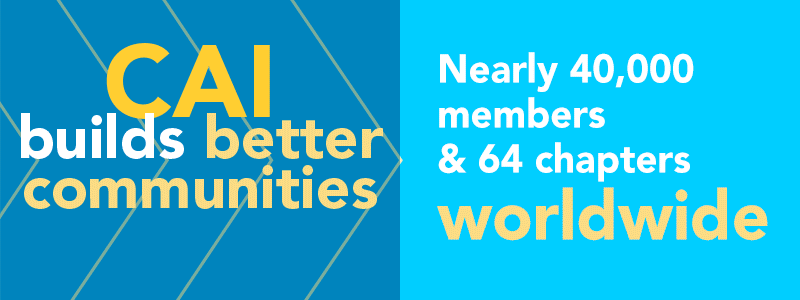>>View and download the article PDF.
A GREEN PLAN
Saving energy—and money—is a priority for this large-scale Colorado community.
By Julie Warren
Sustainable initiatives are a big deal at Highlands Ranch Community Association. And they’re paying off, according to Jerry Flannery, general manager and chief executive officer of this large-scale, mixed-use community of more than 30,000 homes just south of Denver.
With several programs underway that conserve energy, water, and other resources, Highlands Ranch has saved hundreds of thousands of dollars in annual energy costs in the last few years.
“Colorado prides itself in being green and looking at (sustainable) initiatives, whether they’re wind or solar,” says Flannery, whose background is in urban planning and municipal management.
He joined the Highlands Ranch executive team about seven years ago and recommended early on that the community review its facilities and equipment to find more cost-effective and sustainable energy delivery.

SAVINGS FROM SOLAR GARDENS
After attending programs at the nearby National Renewable Energy Laboratory in Golden, Colo., Flannery and Highlands Ranch Facilities Manager Ken Joseph, CMCA, AMS, PCAM, were intrigued by what they learned about community solar, or solar gardens. Joseph and Flannery discussed how best to put this innovative information to use in their community.
“With four recreation centers that average 80,000 square feet each, we have a lot of facilities that we manage for more than 105,000 to 110,000 people,” says Flannery. “We pay some very high energy bills,” adds Joseph.
The Highlands Ranch rec centers, which include outdoor and indoor pools, and indoor tracks, workout rooms with
lots of electricity-dependent equipment, gyms, and even an indoor soccer field, are open from 5 a.m. to 10 p.m. most days, says Joseph. More than 5,000 people go through these rec centers daily. “We might have 7,000 people, if it’s a holiday.”
“That gives you an idea of the scale,” Flannery says.
Although participation in solar gardens can seem somewhat complicated, “it’s basically a system where you get a relief from your energy bills, but you don’t have to put any solar panels on your buildings,” says Flannery.
The two executives shared the information they’d gathered about solar gardens with the Highlands Ranch board. “They felt that it was a good idea,” Flannery says.
HOW THEY WORK
A solar garden or farm is a collection of hundreds of photovoltaic panels mounted on frames a few feet above the ground and covering many acres of rural pasture that are open to the sky—no trees or buildings to block the sun. The solar garden’s developer assumes construction and operating costs, as well as expenses for maintenance and repairs.
The developer also monitors the garden’s energy efficiency.
Working with their energy providers, communities like Highlands Ranch—and, in some cases, school districts, municipalities, and even individual homeowners—can purchase shares in one or more solar gardens in return for credit on their utility bills for the energy the solar garden delivers to the grid.
According to Melina Fleming, vice president of marketing and operations at SunShare, the company that developed and owns the solar gardens Highlands Ranch subscribes to, a solar garden of 6 to 8 acres produces a megawatt of energy, or the equivalent to enough kilowatt hours to operate 500 households in a year. Most solar gardens encompass at least a dozen or more acres. The solar gardens Highlands Ranch have invested in are in a neighboring county.
Nearly two dozen states and 57 U.S. utility companies currently participate in solar garden programs, which Fleming describes as a “rapidly growing industry.” Nineteen states have enacted legislation related to solar gardens and subscriptions to them.
“Our board is very committed to sustainability,” says Joseph. “Our staff is, too. But there’s also quite a cost savings in participating in a solar garden.”
Highlands Ranch—which is invested in as many as five Sunshare solar gardens—will save $1.9 million over 20 years, Joseph says. “The board was very excited about that.”

OTHER WAYS TO SAVE
Investing in solar gardens is just one of several ongoing sustainable projects at Highlands Ranch, including controllers on irrigation systems, xeriscape demonstration gardens, and single-stream recycling.
“Like many other communities, we also have community electronics recycling events,” Joseph says. And there are plenty of sustainable programs available for individual Highlands Ranch households to participate in as well.
Installing thermal equalizer fans in the rec center gyms was another energy cost-saver for Highlands Ranch. Because the air can be much hotter near the gyms’ high ceilings—almost a degree warmer for every foot or two above the floor, according to Joseph—more than two dozen devices were installed on theceiling beams to balance the air temperatures vertically throughout spaces.
“They look like hair dryers, and each one generates a column of air down to the floor,” says Joseph. “We hardly had to run the heat (in the gyms) the winter they were installed because the equalizers did such a good job of pushing that hot air down.”
NEXT STEPS
“We’re always progressing,” Flannery says. “And we’re always looking at green initiatives.” He recommends that managers in communities of all sizes investigate their facilities and determine if the equipment is the most efficient. “Then look at your reserve study to see where you can make an upgrade, and plan for that.”
Flannery also recommends that managers and boards look for available energy-saving programs through their stateenergy office or local utility company.
“There are all kinds of steps you can take, big and small,” Joseph says. “The main thing is to do it.”
©
2018 Community Associations Institute. Further reproduction and
distribution is prohibited without written consent. For reprints, go to
www.caionline.org/reprints.
WANT TO READ MORE?
Join CAI to get the full issue of Community Manager newsletter and receive
additional member benefits.
